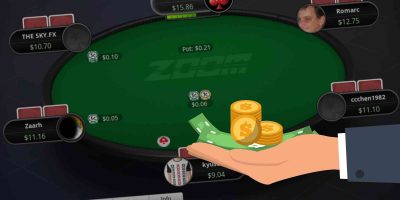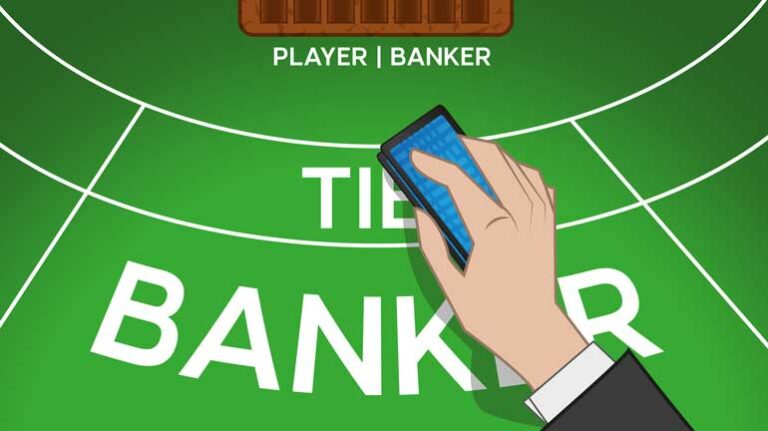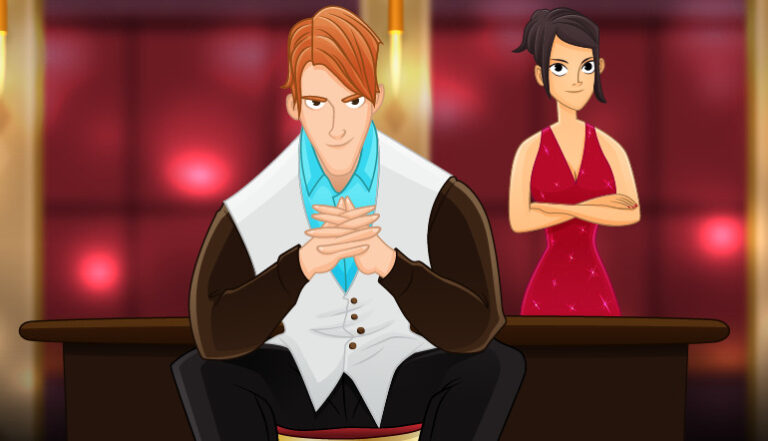Not all blackjack games are created equal. Depending on the playing conditions, the best strategy for playing and betting might be different from one blackjack game to another. In this article, I’ll use the term “playing conditions” to include the list in the Table of Contents below.
Table of Contents
- Soft 17 rule
- Playing rules for the player
- No-hole-card rule
- Number of decks of cards
- Composition of the cards in your hand
- How the cards are shuffled
- The number of players on a table
- The payoff for a blackjack
- Summary
1 – Soft 17 Rule
Some casinos implement the soft 17 rule, meaning, dealers must hit soft 17 rather than stand. This rather innocuous rule doesn’t appear to be a big deal to most players but, in fact, it is.
(Note: A soft 17 is any hand that contains an ace counted as an 11. Examples are Ace-6, Ace-4-2, and Ace-2-Ace-3.)
When a casino requires its dealers to stand on soft 17 (designated as s17), it will state it on the table layout with the following wording:
“Dealer must stand on all 17s.”
If a casino requires its dealers to hit soft 17 (designated as h17), the layout will state:
“Dealer hits soft 17.”
When a dealer must hit soft 17 (h17), usually the dealer will bust more often, which is good news for players. However, when she doesn’t bust, what would have been a 17 sometimes ends up being a higher hand that may beat the player’s hand. Overall, the player’s net expectation is reduced by about 0.2% when the h17 rule is in effect. (This is the same as saying the house edge against a player increases by 0.2% with h17.)
There are some adjustments to the basic playing strategy that should be made for an h17 game (vs. an s17 game). In general, you should:
- Double down on 11 (rather than hit) against a dealer’s ace
- Double down on soft 18 (Instead of standing) against a dealer’s 2, and
- Double down on soft 19 (instead of standing) against a dealer’s 6.
(Note: A more accurate set of playing strategy modifications that takes into effect the number of decks of cards being used can be found in Chapter 2 of my Ultimate Blackjack Strategy Guide.)
2 – Playing Rules
Some rules affect the playing strategy on specific hands. Below are some examples.
Surrender
Surrender is an option that some casinos allow. When a player surrenders his initial two-card hand, he forfeits playing out the hand and automatically loses half of the initial wager. There are two types of surrender, late and early, and both affect your playing strategy.
With late surrender, you can only surrender your hand after the dealer peeks at her hole card when she shows an ace or a ten, to determine if she has blackjack. If she does, the surrender option is no longer available, and you will lose your entire bet unless you also have a blackjack. When you use late surrender correctly, it will reduce the house edge by about 0.07% in multiple-deck games.
Here is one example of how you should change your playing strategy when late surrender is offered.
In a six-deck game with s17, you should alter your playing strategy on the following hands if surrender is offered.
- Surrender (rather than hit) a 15 against a dealer’s 10 upcard
- Surrender (rather than hit) a 16 (but not 8-8) against a dealer’s 9, 10, or Ace upcard
(Note: For the surrender strategy for single and double-deck games with s17 and h17, see the Basic Strategy Table for Late Surrender in Chapter 2.2 in the Ultimate Basic Strategy Guide.)
Early surrender is rarely offered in U.S. casinos and is more prevalent in European and Asian casinos where dealers do not take a hole card until after all players have acted on their hands (so-called European “no-hole-card rule”). With the early surrender option, players can surrender their hand to a dealer’s ace and/or 10-value upcard before the dealer checks to determine if she has a blackjack. Early surrender is a much more favorable rule for players than late surrender. Early surrender against the ace gains you 0.39%, and against the 10, it’s 0.24%, making the total value to the player 0.63% for a six-deck s17 game.
The basic playing strategy for early surrender in a multiple-deck game with s17 is as follows:
- Against a dealer ace, surrender hard 5 to 7 (including 3s), and 12 to 17 (including 6s, 7s, and 8s)
- Against a dealer 10, surrender hard 14 to 16, including 7s and 8s
- Against a dealer 9, surrender hard 10-6 and 9-7 (but not 8s).
Double Down After Pair Splitting
Most casinos allow a player to double down after splitting. However, some do not. In the case when you can’t double down, this will affect your basic playing strategy for some pairs. Here is one example.
Suppose you are playing a six-deck game with s17, you are dealt a pair of 2s, and the dealer’s upcard is a 3. The optimal basic strategy play is to split when you can double down after splitting. (For example, if you were to draw a 9 on one of your split 2s for an 11, you would double down.) However, when you can’t double down after pair splitting, then your only other, less-favorable, option is to hit.
In a six-deck game with s17 when doubling down after pair splitting is not allowed, these are the strategy changes that you should make.
- 2-2 and 3-3 – Hit against a dealer’s 2 and 3 (instead of splitting).
- 4-4 – Hit against a dealer’s 5 and 6 (instead of splitting).
- 6-6: Hit against a dealer’s 2 (instead of splitting).
See the Strategy Charts in Chapter 2 in the Ultimate Blackjack Strategy Guide for more examples of basic playing-strategy changes in single- and double-deck games with s17 and h17.

>
3 – No-Hole-Card Rule
With the no-hole-card rule, the dealer does not take her second card until after all the players have completed their hand. Mathematically, it makes no difference in the long run whether the dealer takes her second card before players act on their hand or she waits and takes the second card after the players act.
However, what affects your odds and your playing blackjack strategy in no-hole-card games is when a player loses additional wagers made on splitting and doubling when the dealer’s second card gives her a blackjack. This occurs mostly in European casinos and it increases the house edge by about 0.11% (rule dependent). It also requires a modification to the basic playing strategy (assuming a multi-deck game).
- Hit a hard 11 against a dealer 10.
- Hit a pair of Aces against a dealer Ace.
- Hit a pair of 8s against a dealer 10 and Ace.
(The above assumes that surrender is not offered. If it is, click here for strategy changes.)
4 – Number of Decks of Cards
The number of decks of cards being used will affect the basic playing strategy. This is because the effect of removing a card in a single-deck game is greater than it is for a six-deck game. The major effect of the above occurs with doubling down. Here is why.
In a single-deck game, doubling is more valuable for a player compared to, say, an eight-deck game. For example, most of the time that you double down it’s when you hold a hard 9, 10, or 11. In order to have 9, 10, or 11 hands, you had to have been dealt two small cards, which means you’ve removed two small cards from the single deck of cards. The remaining undealt cards are, therefore, richer in high cards giving you a better chance of drawing them when you double down.
Blackjack mathematician and author Michael Shackleford computed that you have a 32% chance of being dealt a 10 when you double down a hard 9, 10, and 11 in a single-deck game. The effect of card removal in an eight-deck game is not as strong, which decreases the probability that the double-down card is a 10 to 30.92%.
The above is one reason why you double down on more hands in a single-deck game compared to a six- or eight-deck game. There are other reasons why the number of decks of cards will alter your playing strategy but doubling down is the main one.
See Chapter 2 in the above Blackjack Strategy Guide for strategy tables and charts that summarize the basic playing strategy for any number of decks of cards.
5 – Composition of the Cards in Your Hand
The “traditional” basic strategy does not consider the makeup or composition of the cards in the hand. It turns out there is a difference between a 16 made up of two cards, such as 10-6 and 9-7, and one made up of three cards, such as 4-5-7. All three hands total 16, but with a three-card 16, you are better off standing, whereas with the two-card 16, you should hit.
The reason you should stand on a 16 when your hand contains three or more cards is that your hand contains one or more small-value cards that are no longer available in the pack of unplayed cards. These small cards are exactly what you need to make a pat hand when you hit your 16. The fact that a few of them just landed in your hand is enough to shift the odds toward standing rather than hitting.
Other hands where the strategy depends on the makeup of your hand include 12 against a dealer’s 4, and 15 against a dealer’s 10.
For additional information on the above, consult Chapter 5 in the above Strategy Guide.
6 – How the Cards Are Shuffled
How the dealer shuffles the cards will not alter your playing strategy but it can increase your theoretical hourly losses. Specifically, non-card counters should avoid playing on a blackjack table that uses a continuous shuffling machine (CSM). The latter is a combination automatic shuffler and dealing shoe.
Casinos can place 3-5 decks of cards into the CSM. After a betting round is completed, the dealer will scoop up the just-played cards (discards), and instead of placing them into a discard tray, will insert the cards back into the CSM where they are randomly shuffled with the remaining unplayed cards. Some casinos will place the discards from several rounds into a small discard tray and then scoop up the deck or so of discards and place them back into the CSM.
When a dealer uses a CSM, there is never any down time for manually shuffling the cards. Therefore, on average, the casino can deal about 20% more hands played per hour with a CSM. Since a casino has the advantage against the vast majority of players who play blackjack, their hourly revenue increases. From the player’s perspective, you will lose more on average playing against a CSM dealt game compared to a game dealt manually.
Bottom line: A CSM does not affect your playing strategy. In fact, it actually lowers the house edge against players by a miniscule 0.014% due to the elimination of the “cut card effect” (which I will explain in a future article.) However, the latter is more than offset due to more hands dealt per hour that will increase the theoretical hourly losses for average players. The strategy here is simple: never play at any table that has a CSM.
7 – Number of Players
It’s always better for a non-card counter to play on crowded tables rather than alone or only with one or two other players. Here is the reason why.
- The number of hands dealt per hour with six players will average about 60.
- The number of hands dealt per hour with one player will average about 200.
In other words, the number of hands played per hour increases as the number of players decreases. Playing heads up against a blackjack dealer will result in exposing more of your bankroll to the house edge versus playing at a crowded table. The result will be an increase in your theoretical hourly losses.
For example, suppose you wager $25 per hand playing heads up against a dealer. You play every hand accurately using the basic playing strategy. The house edge against you is a minuscule half of a percent. Your theoretical hourly loss is $25 times 200 hands per hour times 0.50% = $25. If, instead, you play with five other players, then your theoretical loss drops to $7.50. That’s a 70% decrease in theoretical losses per hour.
Bottom line: you will decrease your theoretical losses by playing on crowded tables.
(Note: The opposite is true for card counters. They have the advantage. Therefore, they want to play many hands per hour, which they can do, by playing solo or with a team.)

8 – Blackjack Payoff
Nowadays, many casinos have decreased the traditional 3-2 payoff for a blackjack to 6-5, or, worse, only even money. The decrease in the payoff will not affect your playing strategy but it will increase the house edge by about 1.4%. The greater the house edge, the more a player stands to lose.
Bottom line: avoid all blackjack games that don’t pay 3 to 2 for a player’s blackjack.
9 – Summary
There are several playing conditions that can affect your playing strategy, the house edge, or your theoretical hourly loss.
These include:
- Whether the dealer must hit or stand on soft 17
- The mix of playing rules
- Whether players lose their secondary wagers when doubling and pair splitting if the dealer takes her downcard after all the players have made their playing decisions
- The number of decks of cards being used
- The composition of the cards in specific hands
- Whether a CSM is used for shuffling the cards
- The number of players on a table
- The payoff for a blackjack
It’s important that a player understand the effects that the above playing conditions have on the basic playing strategy, theoretical hourly loss, and house advantage.


















